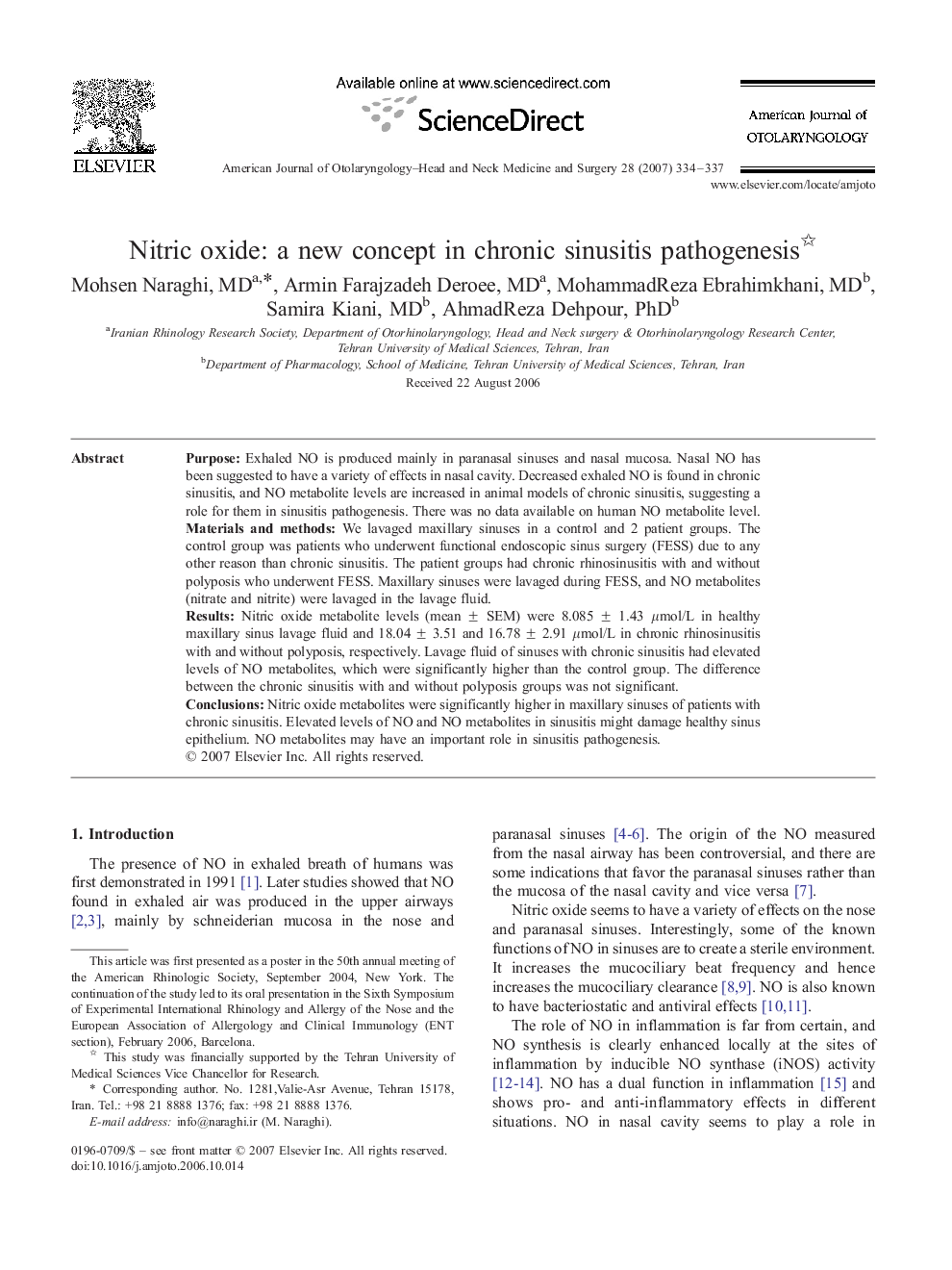| Article ID | Journal | Published Year | Pages | File Type |
|---|---|---|---|---|
| 4104500 | American Journal of Otolaryngology | 2007 | 4 Pages |
PurposeExhaled NO is produced mainly in paranasal sinuses and nasal mucosa. Nasal NO has been suggested to have a variety of effects in nasal cavity. Decreased exhaled NO is found in chronic sinusitis, and NO metabolite levels are increased in animal models of chronic sinusitis, suggesting a role for them in sinusitis pathogenesis. There was no data available on human NO metabolite level.Materials and methodsWe lavaged maxillary sinuses in a control and 2 patient groups. The control group was patients who underwent functional endoscopic sinus surgery (FESS) due to any other reason than chronic sinusitis. The patient groups had chronic rhinosinusitis with and without polyposis who underwent FESS. Maxillary sinuses were lavaged during FESS, and NO metabolites (nitrate and nitrite) were lavaged in the lavage fluid.ResultsNitric oxide metabolite levels (mean ± SEM) were 8.085 ± 1.43 μmol/L in healthy maxillary sinus lavage fluid and 18.04 ± 3.51 and 16.78 ± 2.91 μmol/L in chronic rhinosinusitis with and without polyposis, respectively. Lavage fluid of sinuses with chronic sinusitis had elevated levels of NO metabolites, which were significantly higher than the control group. The difference between the chronic sinusitis with and without polyposis groups was not significant.ConclusionsNitric oxide metabolites were significantly higher in maxillary sinuses of patients with chronic sinusitis. Elevated levels of NO and NO metabolites in sinusitis might damage healthy sinus epithelium. NO metabolites may have an important role in sinusitis pathogenesis.
